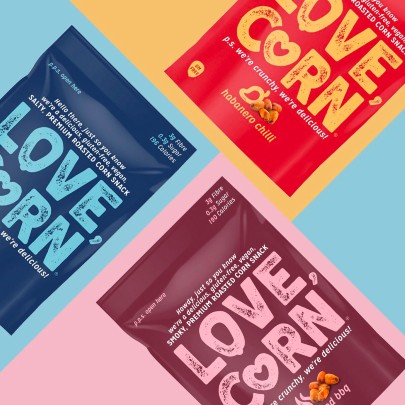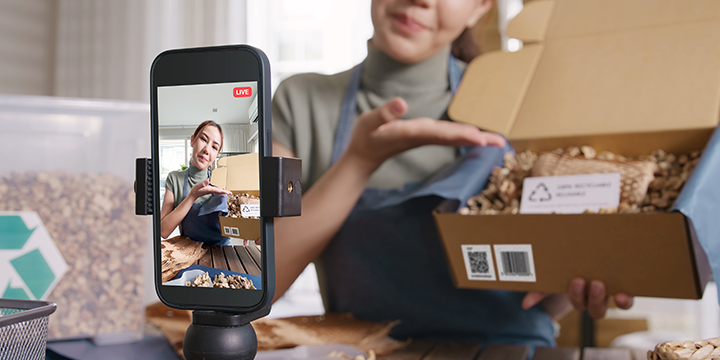August 14, 2024 Industry news
LOVE CORN is the fastest growing new snack brand in the USA and UK. With a mission to become the “feel good” crunchy snack swap to crisps and nuts, it was founded in 2016 by Jamie McCloskey, his brother Gavin McCloskey and sister-in-law Missy McCloskey.
Since launch, the brand has gone from strength to strength. With its unique product offering, effective branding, and a strong emphasis on health and wellness it has successfully carved out a niche in the competitive snack market.
As a result, it has enjoyed rapid growth in terms of product range, distribution channels, and market reach, has been met with overwhelmingly positive feedback from consumers and industry experts alike, and has secured lucrative partnerships with major retailers, ensuring widespread availability and brand visibility.
With it’s meteoric rise and promising future, LOVE CORN serves as a shining example to other aspiring snack founders which is why we recently joined Jamie at Bread & Jam 2024 to find out more about his incredible journey.
Read on for a summary of some of the key insights, tips and advice he shared.
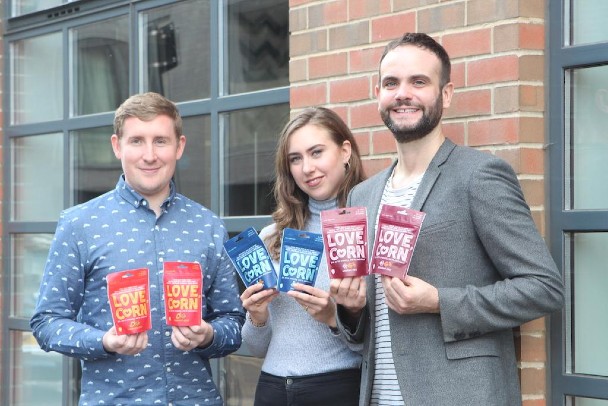
Gavin, Missy and Jamie McCloskey
Getting started
LOVE CORN’s first major milestone came when Jamie took the business to the Lunch Show in 2016. It was there that he met Planet Organic, who launched his products in seven stories the following year. Fast forward to today and the brand is now in over 4,000 stores in the UK and between 11 - 12,000 in the US.
According to Jamie, the food and drink industry has changed a great deal over the past decade. “When I started there were so many new trends getting listed and there was a lot of money available for investing” he said. “The feedback back then was basically invest, invest, invest. Don’t worry about loosing money as there is plenty in the market.”
“Today the world is a very different place” he continued. “It has never been harder to raise money.
You absolutely need to have a path to profitability, you need a sustainable business and many of the retailers have been burnt. Most of the trends I saw in the early days have since been launched and didn’t sell.”
Finding the ying to your yang
LOVE CORN is very much a family business and the different strengths the two brothers bring has been critical to their success.
“I didn’t go to university and probably over indexed more on the emotional intelligence side of things,” said Jamie. “I was always better at building relationships, storytelling, creativity etc., while my brother over indexed on IQ. He studied economics at LSE before embarking on a career in finance and operations.
“Us coming together as co-founders made for a powerful combination as we complemented each other’s skill sets.
“This industry can be brutal” he continued. “It is a grind, so I highly recommend having a co-founder that compliments your skills. This will be fundamental to not only your success, but also your mental health. The industry is certainly full on, so I have a lot of respect for sole founders.”
Thinking category
LOVE CORN is actually the family’s second snack brand. The trio launched their first, Nourish Snacks, in the U.S. in 2014. Inspired by Graze, they started out as a pure ecommerce business but were soon approached by Starbuck who launched their products in 5000 locations.
Encouraged by this early success Jamie, Gavin and Missy decided to re-brand for retail but “a lot of mistakes were made” and it didn’t work out. However, Jamie still views this as a positive experience as it set him in good stead when speaking to investors about LOVE CORN.
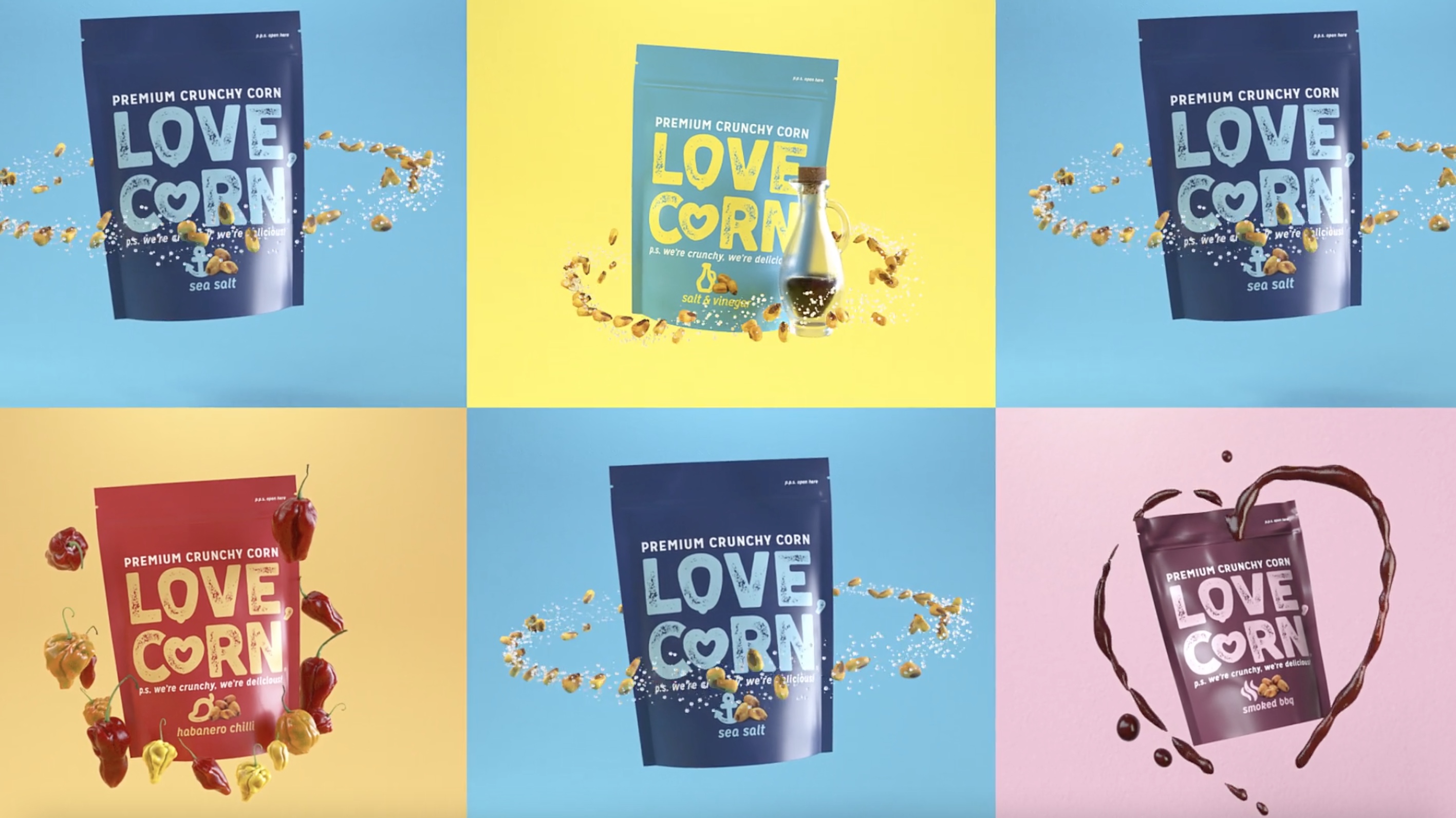
“They were actually happy to hear it as there were learnings we could take forward and build on for this business. The key thing with Nourish was that our brand was too complicated. We have over 40 different snacks with different margin expectations. We soon learnt that we needed to start thinking in terms category rather than brand. This approach took us from 40 different products to one which we really nurtured and developed.”
And how do you “think category?”. “Consider the existing products you are asking consumers and retailers to swap out for yours” Jamie explained.
“Crunchy corn was practically unheard of in the UK, so we had lots of freedom in terms of how we positioned ourselves. It also meant we had to educate consumers as our product was unknown.
“We positioned ourselves as the allergen free alternative to nuts (parents can’t bring nuts into schools) and a healthier alternative to crisps. This meant we had the mainstream appeal and attributes of both nuts and crisps. If a nut and a crisp had a baby, it would be LOVE CORN and that is why our consumers love us.”
Finding the all important “white space”
According to Jamie, finding a “genuine white space” for your product is critical. This “white space” is the gap between the existing products customers have already bought and the other unique products and services that are yet to be offered to them. This is the place where unmet customer needs spark real innovation.
Jamie only became confident that he had found this sweet spot after handing out over 50,000 samples and gathering feedback. “You really need to get out there and into stores” he said. “You need to speak to consumers. It was only after handing out thousands of bags of corn that I knew with almost complete certainty that crunchy corn had the potential to become the next big snacking category.
“I think the real litmus test for any founder is whether or not you believe you brand could still be filling shelves and baskets in 20 or 30 years’ time” he continued”. “When I go into Tesco and see my products sitting alongside the likes of Pringles and Walkers, I know that this is where they are meant to be and where they will stay for a long time. When you are putting your brand and strategy together, you need to look beyond today’s trends and ask yourself does this product have longevity. If the answer is no, you may need to rethink your brand and strategy.”
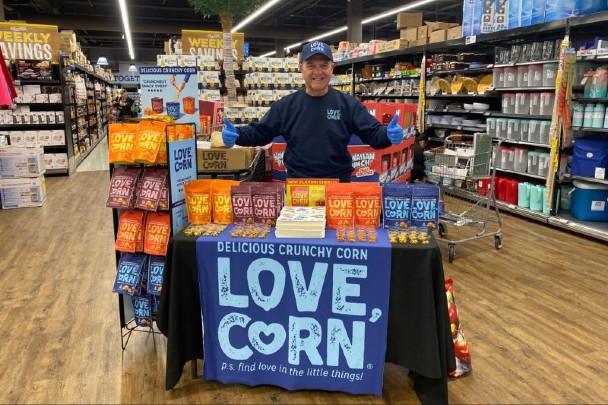
The path to profitability
According to Jamie, given that the days of easy investment are long gone, ensuring you have good margins will be essential for your survival, particularly in those challenging early stages of your business.
This requires having strong mainstream appeal which Jamie believe can be achieved by having the “four Ps" in place:
- Right product
- Right price
- Right placement in store
- Right promotional strategy
In the short term, Jamie believes having the right product is more important than brand. In the long term the opposite is true but, in order to develop a strong brand, you need to launch with a really strong product that tastes delicious and offers genuine value to your consumers.
Once you have nailed your product, creating a standout brand that really connects with consumers on an emotional level is how you will secure long-term success, especially as more products enter your category.
“When people say ‘I love your brand’, what they really mean is ‘I love your packaging’ Jamie continued. “I can’t really emphasise the importance of standout packaging. You need to view it as a mini billboard on the shelf. When consumers are walking down the aisle, they typically have just seven seconds to make a decisions so your packaging really needs to pop.”
Do your research and keep it simple
Jamie recommends keeping things simple at first. “Don’t go down the road of innovation for innovation sake” he warned.” Wait until you are ready and stay focused on doing one thing really well and don’t move onto to something else until you are ready.
“The research stage is so important. You need to understand your consumer, their tastes and budget to ensure you have the right product at the right price. If you only sell well in affluent, trendy, high population areas your chances of long term success are going to be greatly reduced. You need to have a great tasting product that people can afford and will be willing to swap in for something else.”
This is why Jamie repeatedly stressed the importance of carefully researching your category and potential margins. "Retailers are not looking for products in already crowded categories. They are looking for the unique products no one else has so you want to be offering them something new or fresh. It all comes back to finding that all important white space" he concluded.
In terms of margins, Jamie advised really asking yourself if you truly believe you could achieve margins of 40 – 50 per cent plus in the long term. "If the answer is no" he said, "then you really need to reconsider if your product is the right one to launch. The more margin you have, the more you can reinvest into other key areas such as marketing. This will be critical to securing your success in the long term."
